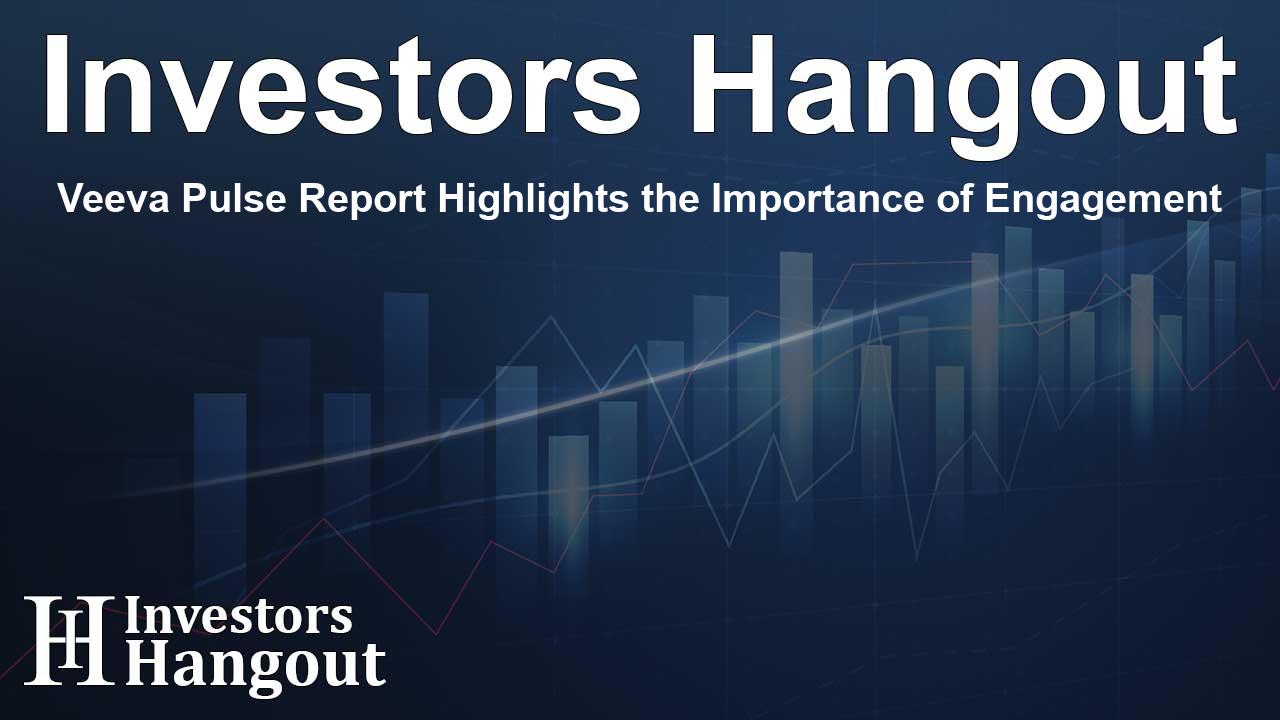Veeva Pulse Report Highlights the Importance of Engagement

Veeva Pulse Report Highlights the Importance of Engagement
Synchronizing sales and marketing improves outcomes, yet 65% of field engagements are not.
Veeva Systems (NYSE: VEEV) has unveiled its latest insights from the Veeva Pulse Field Trends Report, shedding light on how aligned sales and marketing engagements support biopharmaceutical companies in addressing the growing demands of healthcare professionals (HCPs). The report indicates that as HCPs face increased constraints on their time, it is crucial for biopharmaceutical organizations to connect in-person meetings with various promotional efforts to provide comprehensive educational support, ultimately fostering treatment adoption.
The Challenge of Limited Engagement Time
With healthcare professionals' expectations on the rise for deeper scientific insights, they are constrained more than ever in terms of available time. Recent data indicates a 7% decline in in-person meetings per HCP compared to last year. While it's essential for sales and marketing teams to collaborate in order to optimize these engagements, a staggering 65% of interactions remain unsynchronized, hindering the potential for improved treatment adoption rates.
The Need for Efficient Communication
"Physicians have limited time and don’t require redundant information. It’s vital that the transfer of knowledge is efficient and occurs through reliable channels. Each interaction should contribute to the subsequent communication," stated Dr. Vital Hevia, a urologist at ROC Clinic and HM Hospitals.
Key Findings from the Veeva Pulse Report
The Veeva Pulse report provides several remarkable insights regarding the current state of HCP engagements:
- Disconnected sales and marketing activities hinder effective communication: Today, a significant 65% of HCP engagements lack synchronization, which poses a challenge as time and attention from HCPs diminish.
- Benefits of Synchronized Interactions: Research shows that a rep meeting, followed by a digital touchpoint within 10 days, is 30% more likely to convert into a prescription. Additionally, HCPs exposed to digital advertisements after a speaker program are 25% more likely to prescribe. Engagements that direct HCPs to a brand website post-rep visit also result in a 60% increase in prescription likelihood.
- Implementing an Omnichannel Strategy: Companies that effectively integrate data, systems, and KPIs enable a better understanding of scientific discussions, which, in turn, satisfies HCPs' needs for intricate information amidst complex therapeutic landscapes.
"With the advent of increasingly complex therapies, biopharmaceutical companies face the challenge of effectively conveying scientific data to HCPs who have scant time available for comprehensive discussions. A unified engagement model that aligns sales and marketing efforts allows for more efficient dissemination of crucial information," explained Dan Rizzo, Vice President of Business Consulting at Veeva. "By leveraging connected tools and data, companies can ensure that healthcare providers receive the vital information required to facilitate faster treatment adoption."
Insights on the Veeva Pulse Field Trends Report
The Veeva Pulse Field Trends Report analyzes over 600 million HCP interactions annually, derived from more than 80% of biopharma's commercial field teams globally. This industry-leading benchmark offers valuable insights into HCP engagement dynamics. By collating real-time transactional data gathered from Veeva CRM and other Veeva data products, the report allows companies to evaluate and enhance performance effectively, guiding actionable strategies for sustained growth and impact.
Conclusion
As biopharmaceutical companies strive to meet the evolving needs of healthcare professionals, understanding the importance of synchronized engagements remains critical. Veeva continues to position itself at the forefront by providing tools and insights that support better communication and improved healthcare outcomes.
Frequently Asked Questions
What is the main finding of the Veeva Pulse Report?
The Veeva Pulse Report reveals that 65% of field engagements with healthcare professionals are not synchronized, hindering effective communication and treatment adoption.
Who is Dan Rizzo?
Dan Rizzo is the Vice President of Business Consulting at Veeva, providing leadership and insights on the importance of synchronized engagement strategies in the biopharmaceutical industry.
What challenges do healthcare professionals face according to the report?
Healthcare professionals are facing increasing demands for scientific information while being more time-constrained, making effective communication crucial.
How does synchronized engagement affect prescription rates?
Synchronized engagement, where a rep meeting is followed by digital exposure, significantly increases the likelihood of receiving prescriptions from healthcare professionals.
What does the Veeva Pulse Field Trends Report analyze?
The report analyzes over 600 million healthcare interactions annually, providing critical insights into engagement and efficacy across the biopharma sector.
About The Author
Contact Addison Perry privately here. Or send an email with ATTN: Addison Perry as the subject to contact@investorshangout.com.
About Investors Hangout
Investors Hangout is a leading online stock forum for financial discussion and learning, offering a wide range of free tools and resources. It draws in traders of all levels, who exchange market knowledge, investigate trading tactics, and keep an eye on industry developments in real time. Featuring financial articles, stock message boards, quotes, charts, company profiles, and live news updates. Through cooperative learning and a wealth of informational resources, it helps users from novices creating their first portfolios to experts honing their techniques. Join Investors Hangout today: https://investorshangout.com/
The content of this article is based on factual, publicly available information and does not represent legal, financial, or investment advice. Investors Hangout does not offer financial advice, and the author is not a licensed financial advisor. Consult a qualified advisor before making any financial or investment decisions based on this article. This article should not be considered advice to purchase, sell, or hold any securities or other investments. If any of the material provided here is inaccurate, please contact us for corrections.
